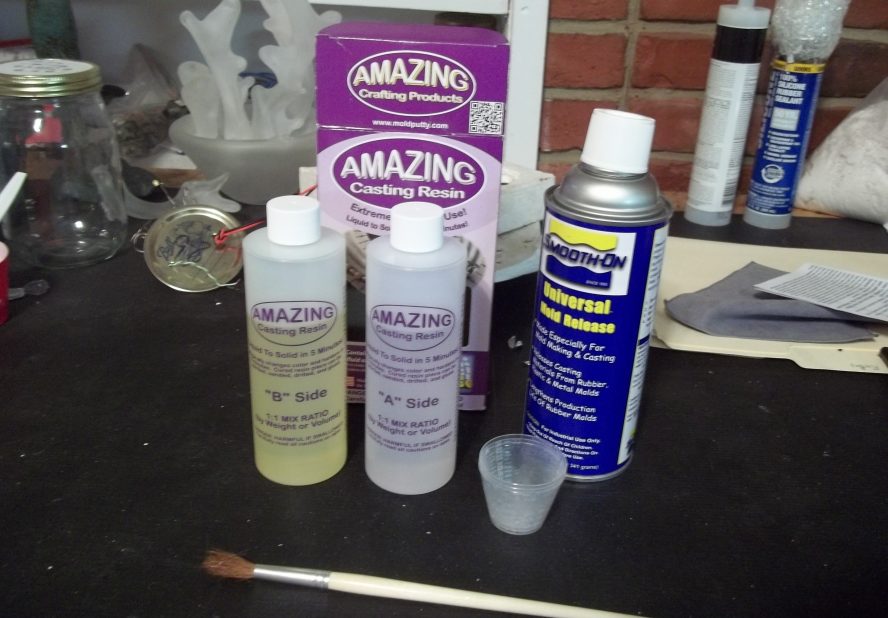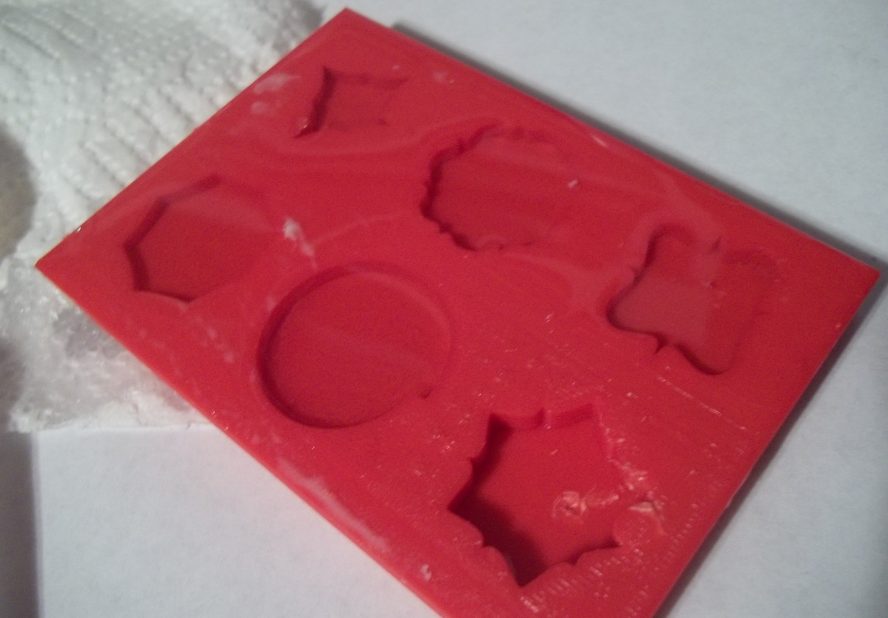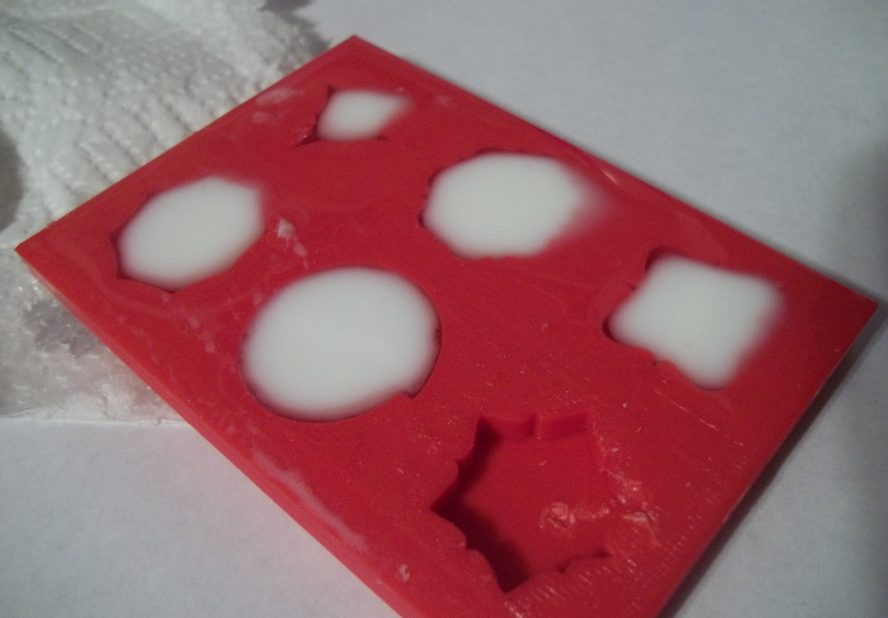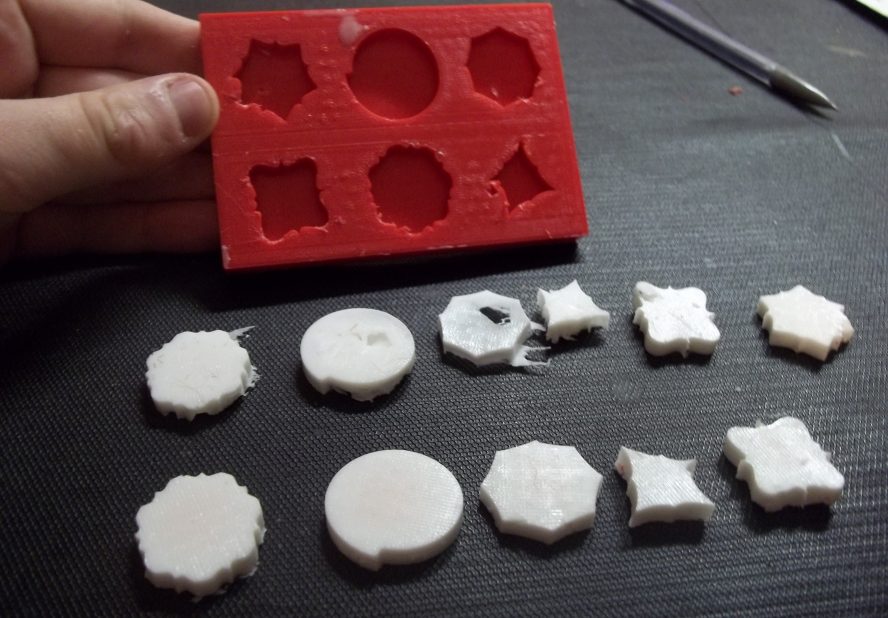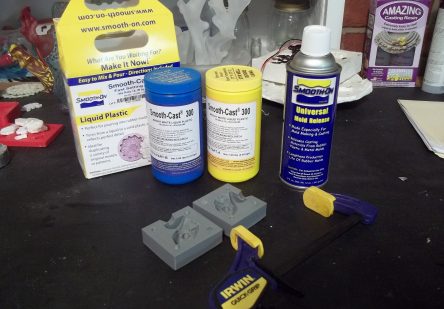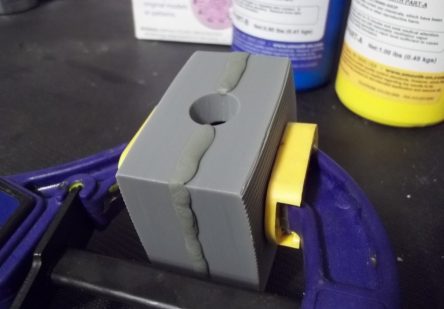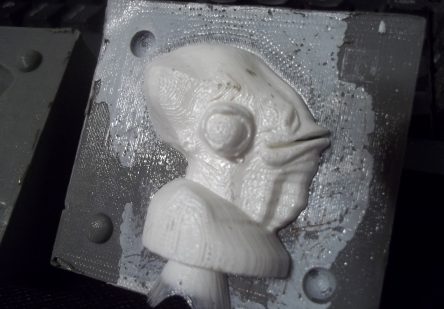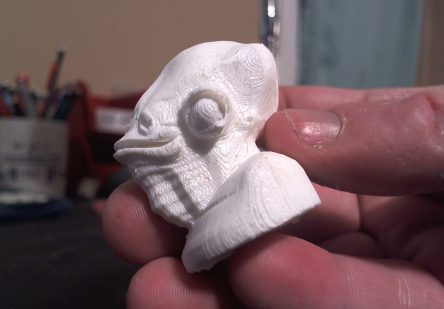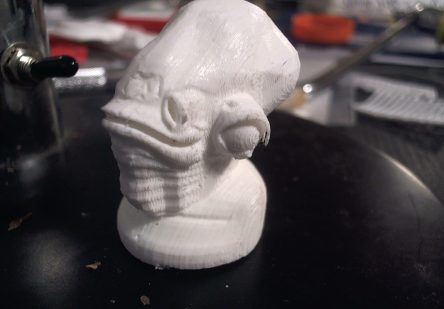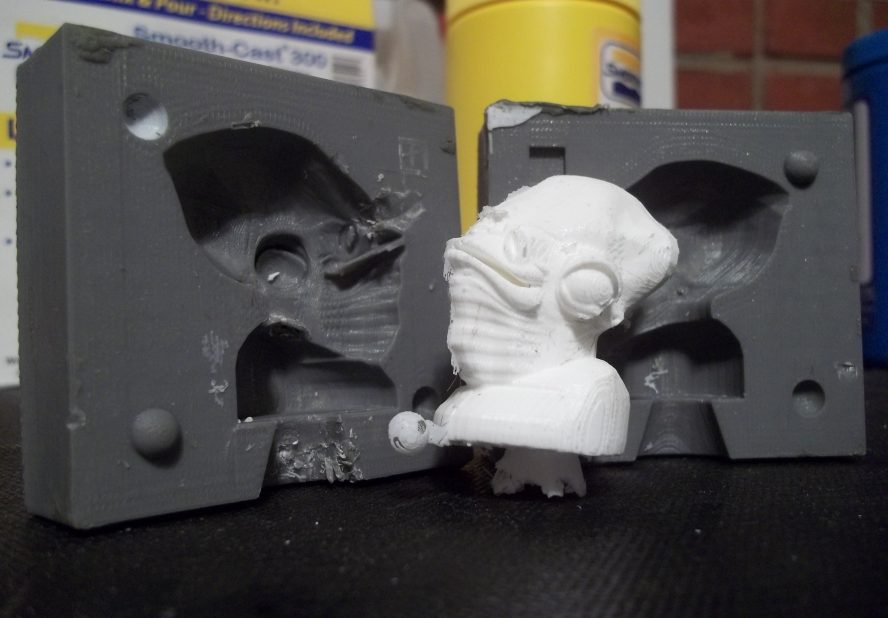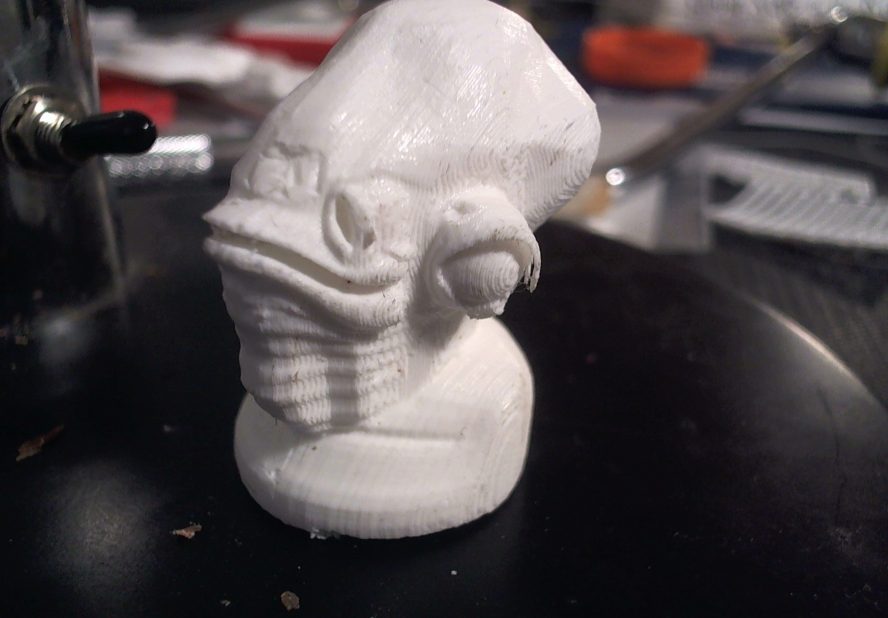Resin and silicone casting with 3D-printed molds
A couple weeks ago I finally got around to continuing some of my experiments with 3D-printed molds and casting media. I had some casting resin and some silicone casting media laying around, specifically these:
- Resin: Amazing Casting Resin from Alumilite ($19.99)
- Silicone: Smooth-On Smooth-Cast 300 from Smooth-On ($25.96)
I also ordered a can of Universal Mold Release ($13.28) from Smooth-On, and I’m glad I did! Both the resin and the silicone turn very hard and brittle, so its necessary to apply some sort of release agent just to get them back out.
I meant to order a soft, flexible silicone material to create castings, but the Smooth-On silicone turned out to be very hard, much more like the resin or a hard plastic material. Whoops.
Resin casting
I applied Universal Mold Release to an open-face mold I had laying around, then mixed up the resin in a 1:1 ratio and poured it in. I did two attempts, using more resin the second time. I wish I had added a draft angle to my shapes, but I just didn’t know how at the time. As a result, the second castings were much harder to get out and I ended up damaging the mold a bit getting the final pieces out. Overall, it worked fine and I can just print another mold!
Silicone casting
For the silicone casting, I used a 3D-printed two-part mold of Admiral Ackbar, which I prepared with Universal Mold Release. I clamped the two halves together with a wood clamp, then manually applied a bead of modeling clay around the seam just to be safe. Like the resin, the silicone is mixed in a 1:1 ratio (part A and part B), then poured in through a pour hole. I was pleasantly surprised by just how fluid the liquid silicone was, it was extremely easy to pour.
Like I mentioned earlier, I meant to order a soft, flexible silicone material to produce casts with, but when this stuff cured I realized it was almost identical to the resin. As a result, it was a bit more difficult to get out of the mold than I expected. One half came off perfectly fine, but the other was a little more stuck. I eventually pried it out with minimal damage to the casting and only a little bit of damage to the mold.
The final piece feels like a solid chunk of plastic, and is very difficult to scratch or dent. I even put the cast into a pair of pliers and gave it a good hard squeeze with no ill effects! It definitely seems sandable, paintable and machinable, like the packaging says, so the material could be really useful if you use it on purpose!
